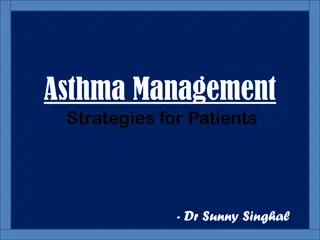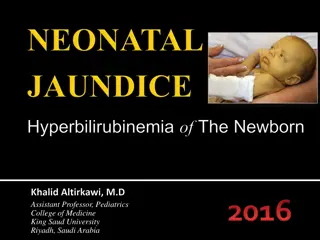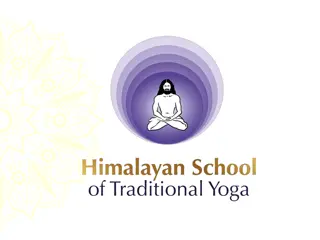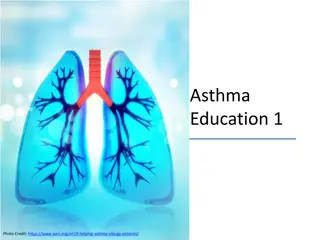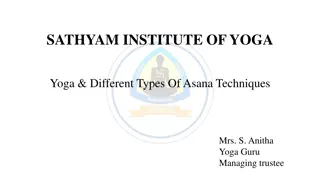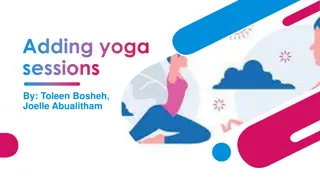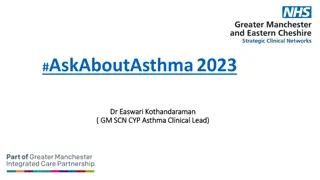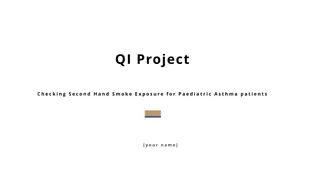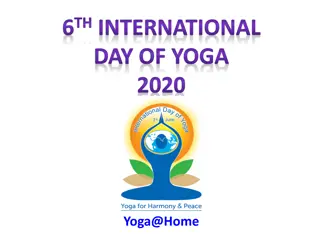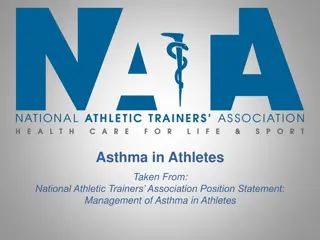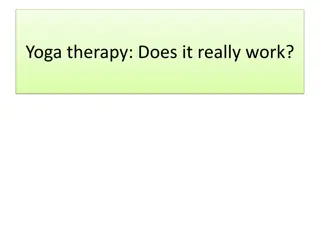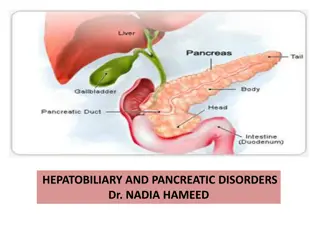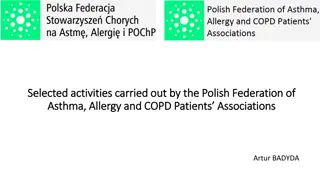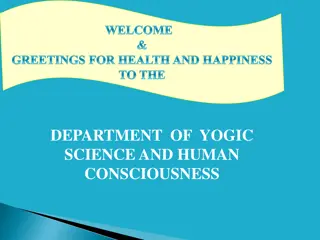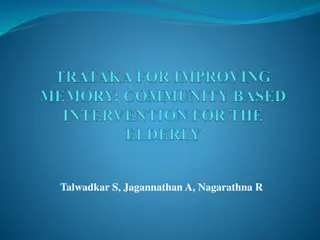Yogic Science: Effects of Yoga on Asthma and Jaundice
Yogic science explores the impact of yoga on various diseases like asthma and jaundice. For asthma, specific yoga poses and breathing techniques can help improve respiratory function and reduce symptoms. On the other hand, jaundice, characterized by yellowing of the skin, can also benefit from yoga practices to support overall health and well-being.
Download Presentation

Please find below an Image/Link to download the presentation.
The content on the website is provided AS IS for your information and personal use only. It may not be sold, licensed, or shared on other websites without obtaining consent from the author.If you encounter any issues during the download, it is possible that the publisher has removed the file from their server.
You are allowed to download the files provided on this website for personal or commercial use, subject to the condition that they are used lawfully. All files are the property of their respective owners.
The content on the website is provided AS IS for your information and personal use only. It may not be sold, licensed, or shared on other websites without obtaining consent from the author.
E N D
Presentation Transcript
YOGIC SCIENCE EFFECT OF YOGA ON VARIOUS DISEASES
ASTHMA Asthma is a condition in which your airways narrow and swell and may produce extra mucus. This can make breathing difficult and trigger coughing, a whistling sound (wheezing) when you breathe out and shortness of breath. For some people, asthma is a minor nuisance
COMMON ASTHMA TRIGGERS Tobacco Smoke. Dust Mites. Outdoor Air Pollution. Pests (e.g., cockroaches, mice) Pets. Other Triggers.
EFFECY OF YOGA ON ASTAMA Nadi Shodhan pranayama (Alternate Nostril Breathing technique) Kapal Bhati Ardha Matsyendrasana (Sitting Half Spinal Twist) Pavanamuktasana (Wind Relieving Pose) Setu Bandhasana (Bridge Pose) Bhujangasana (Cobra Pose) Badhakonasana (Butterfly Pose) Poorvottanasana (Upward Plank Pose) Shavasana (Corpse Pose)
NADI SHODHAN PRANAYAMA (ALTERNATE NOSTRIL BREATHING TECHNIQUE) Begin with this pranayama to calm your mind and relieving the body of accumulated stress. This breathing technique has a healing effect on many respiratory and circulatory problems.
KAPAL BHATI This breathing technique relaxes the mind and energizes the nervous system. It also clears all the nadis (energy channels) and improves blood circulation.
ARDHA MATSYENDRASANA (SITTING HALF SPINAL TWIST) The Sitting Half Spinal Twist opens the chest and improves the supply of oxygen to the lungs, thereby reducing the probability of asthma restricting you.
JAUNDICE Jaundice is a condition in which the skin, whites of the eyes and mucous membranes turn yellow because of a high level of bilirubin, a yellow- orange bile pigment. Jaundice has many causes, including hepatitis, gallstones . You can get jaundice if a gallstone passes out of the gallbladder into the bile duct and blocks the flow of bile
Jaundice may occur if the liver can't efficiently process red blood cells as they break down. It's normal in healthy newborns and usually clears on its own. At other ages, it may signal infection or liver disease. Symptoms include yellowing of the skin and whites of the eyes.
EFFECT OF ASANA AND YOGIC PRACTICE ON JAUNDICE Bandha : This asana helps tone and strengthen your abdominal organs especially the liver. Sarvangasana: It also helps strengthen the liver, kidneys and respiratory system. Also, perform these yoga poses for a healthy liver and stronger immunity. Matsyasana: This asana not only boosts birth circulation to your head but also tones all your abdominal organs and eliminate toxins.
Ujjayi breathing: Ujjayi breath brings relaxation in the body and mind immediately. Yoga nidra: Yoga nidra or yogic sleep proves to be a good relaxing technique for the body and mind and replenish the body naturally, helping it get proper restful sleep. Vaman dhauti: Vaman dhauti is the process of vomiting by stimulating the root of your tongue with index and middle finger. This process helps get rid of excess bile and gas in the elementary canal.
HEPATITIS Hepatitis damages the liver, making it less able to move bilirubin into the bile ducts. Hepatitis may be acute (short-lived) or chronic (lasting at least 6 months). Acute viral hepatitis is a common cause of jaundice, particularly jaundice that occurs in young and otherwise healthy people.
BLOOD PRESSURE A normal blood pressure level is less than 120/80 mmHg What is blood pressure means? What is blood pressure? Blood pressure is the force of your blood pushing against the walls of your arteries. Each time your heart beats, it pumps blood into the arteries. Your blood pressure is highest when your heart beats, pumping the blood
A condition in which the force of the blood against the artery walls is too high. Usually hypertension is defined as blood pressure above 140/90, and is considered severe if the pressure is above 180/120. High blood pressure often has no symptoms. Over time, if untreated, it can cause health conditions, such as heart disease and stroke. Eating a healthier diet with less salt, exercising regularly and taking medication can help lower blood pressure.
SYSTOLIC AND DIASTOLIC PRESSURE The first number, called systolic blood pressure, measures the pressure in your arteries when your heart beats. The second number, called diastolic blood pressure, measures the pressure in your arteries when your heart rests between beats.
YOGA ASANA TO CURE BLOOD PRESSURE Meditation Alom- vilom Savasana Makarasana pranayama





